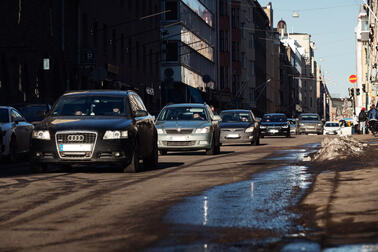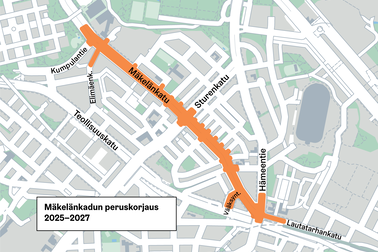
The vision for 2040 presented in the ILME plan is that the air quality and soundscape of Helsinki are excellent. The plan covers the period of 2024–2029, featuring ten objectives that the city will pursue through nearly 40 measures. The measures focus particularly on preventing street dust and emissions from small-scale wood burning, as well as reducing traffic noise.
The ILME plan continues Helsinki’s long-term work to improve the city’s air quality and soundscape
Helsinki has been working towards improved air quality and a better soundscape for a long time. The City’s oldest noise abatement plans were created back in the 1980s.
“Over the years, we have been able to improve the quality and pleasantness of the urban environment through long-term work. In a city that continues to grow and densify along busy traffic routes, the importance of air protection and noise abatement will only increase in the future,” explains Unit Manager Laura Walin from the Environmental Protection and Guidance Unit.
Traffic is the primary source of harmful noise
The proportion of Helsinki residents living in noisy areas has slightly increased over the past few decades. Traffic is the primary source of harmful noise and, according to the city’s noise assessment conducted in 2022, 39 percent of Helsinki residents live in areas where the noise level caused by road traffic exceeds the limit value of 55 dB during the day.
“Areas and places with a peaceful and invigorating soundscape are very important to residents. In addition to preventing traffic noise, the measures of the ILME plan also cover the development of sites with a peaceful soundscape,” Environmental Specialist Anne Leppänen comments.
New Air Quality Directive calling for stricter air protection in Helsinki as well
The air quality in Helsinki has improved over the last few decades, and it is fairly good at an international level. However, street dust, exhaust fumes from traffic and small-scale wood burning continue to have adverse impacts on people’s health and the pleasantness of the environment.
The EU’s new Air Quality Directive, likely to enter into force this year, will significantly tighten the binding limit values for air quality in 2030. The Directive is based on the recently tightened air quality guidelines of the WHO. Air pollution causes health hazards even in small concentrations, and not all health effects of air pollution are even known yet.
“With its new ILME plan, Helsinki seeks to further improve the city’s air quality and prepare for future tightenings of the air pollution limit values in advance,” Environmental Specialist Suvi Haaparanta explains. The newly completed ILME plan will be updated in the future if more effective measures are needed for achieving new binding limit values.
The Environment and Permits Sub-committee approved Helsinki’s new Air Quality and Noise Abatement plan on 23 May 2024. The ILME plan and its background reports can be found (in Finnish) on the city’s website at www.hel.fi/ilme .


